带空间
2016-12-06设计NumenForUse
设计:Numen/For Use
带空间
设计:Numen/For Use
对于一座带有历史屋顶的普通建筑,用透明胶带反复包裹它的柱子就会形成一个复杂的不规则表面,整个过程犹如有机体的生长。这个想法源于舞蹈演出的一组设计理念:它的造型由舞者在柱子之间的运动演化而成。舞者在运动中拉开胶带,所形成的造型就是编舞的录像(带)。一维的线条演化出来的表面是韵力非凡的有机造型。而走入形体之中的观众则使雕塑转化为建筑。
带空间的理念进而发展为更具雕像性的建构形式。它实际上是通过混乱的包裹“形成的”,而一维的线条(“带”)慢慢变成二维的平面,最终扭曲成形。
这个装置的构想是一座侵入任意位置、又属于特定场所的寄生建筑。主干的各条直线在给定的区域中展开,这些拉筋随后沿对角线方向用数层弹性胶带包裹起来,形成复杂的有机形式,与大自然中这种结构的生成如出一辙。
胶带的层数愈多,形体就会随曲率的增加而愈实在。结构内部是柔软、有弹性、易于弯曲的,而造型本身在静止时是完美的,因为它充分符合力的曲线,而且造型也是由此确定的。在观众进入装置的那一刻,原来的雕塑就完美地化作建筑。
巴黎带
这个策展理念深入到空间与心理的内在领域,形成沉浸、反省和探究内心深处的主题。其主旨是将整座建筑变为抖动的思维/实在有机体,让积极的探索者去追寻和发现它柔滑的内在界限。“巴黎带”延展的生物形表皮标出了整个体验的起点,化作指向内心的返祖环境——重归洪荒的感受萦绕在每一处开口上。(尚晋 译)
项目信息/Credits and Data
地点与时间/Location and Period: 维也纳,奥地利/顶楼(2009);维也纳,奥地利/音乐厅(2010);贝尔格莱德,塞尔维亚(2010);柏林,德国(2010);法兰克福,德国(2010);斯德哥尔摩,瑞典(2011);佛罗伦萨,意大利(2011);墨尔本,澳大利亚(2011);哈瑟尔特,比利时(2012);东京,日本(2013);厄勒布鲁,瑞典(2014);巴黎,法国(2014-2015)/Vienna/Attic, Austria (2009); Vienna/ Odeon, Austria (2010); Belgrade, Serbia (2010); Berlin, Germany (2010); Frankfurt, German (2010); Stockholm, Sweden (2011); Florence, Italy (2011); Melbourne, Australia (2011); Hasselt, Belgium (2012); Tokyo, Japan (2013); Örebro, Sweden (2014); Paris, France (2014-2015)
摄影/Photos: Kristof Vrancken, Numen/For Use
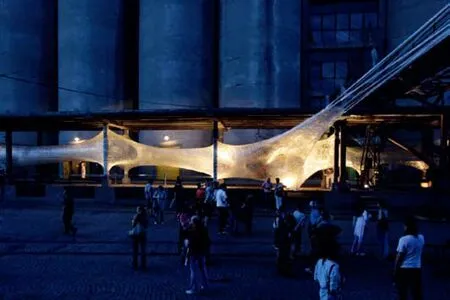

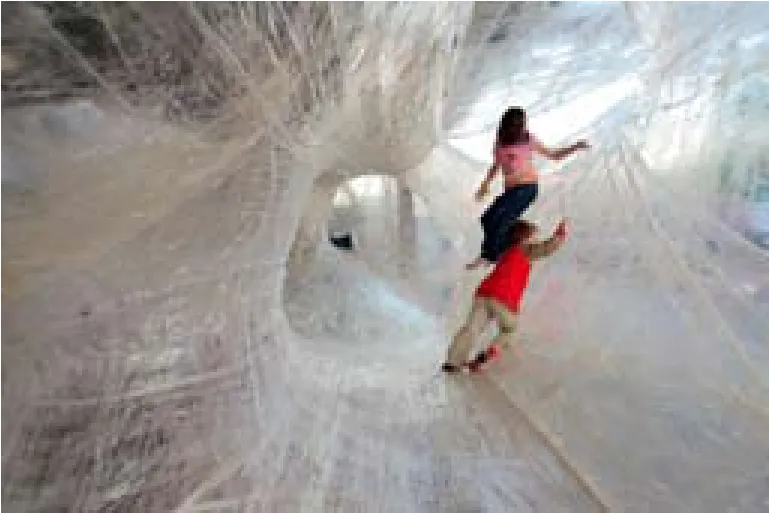
1-3 贝尔格莱德,塞尔维亚/Belgrade, Serbia, 2010
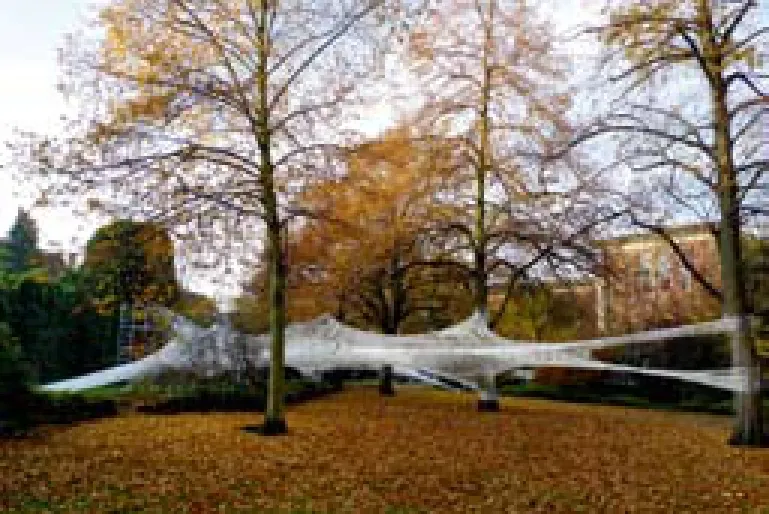

4.5 哈瑟尔特,比利时/Hasselt, Belgium, 2012
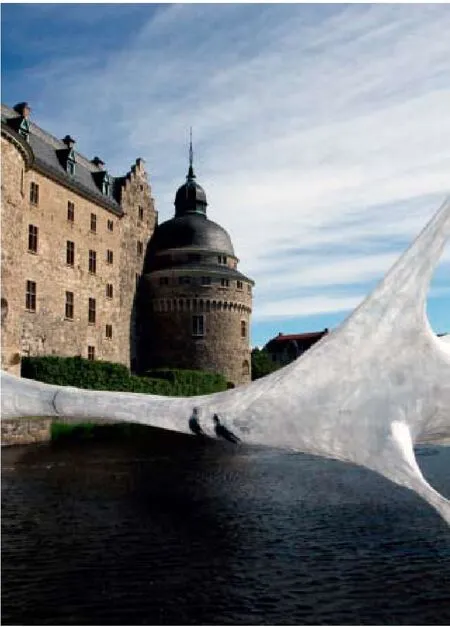

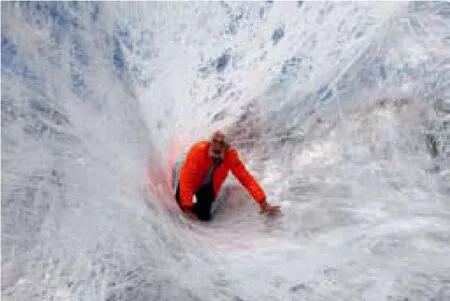
6-8 厄勒布鲁,瑞典/Örebro, Sweden, 2014
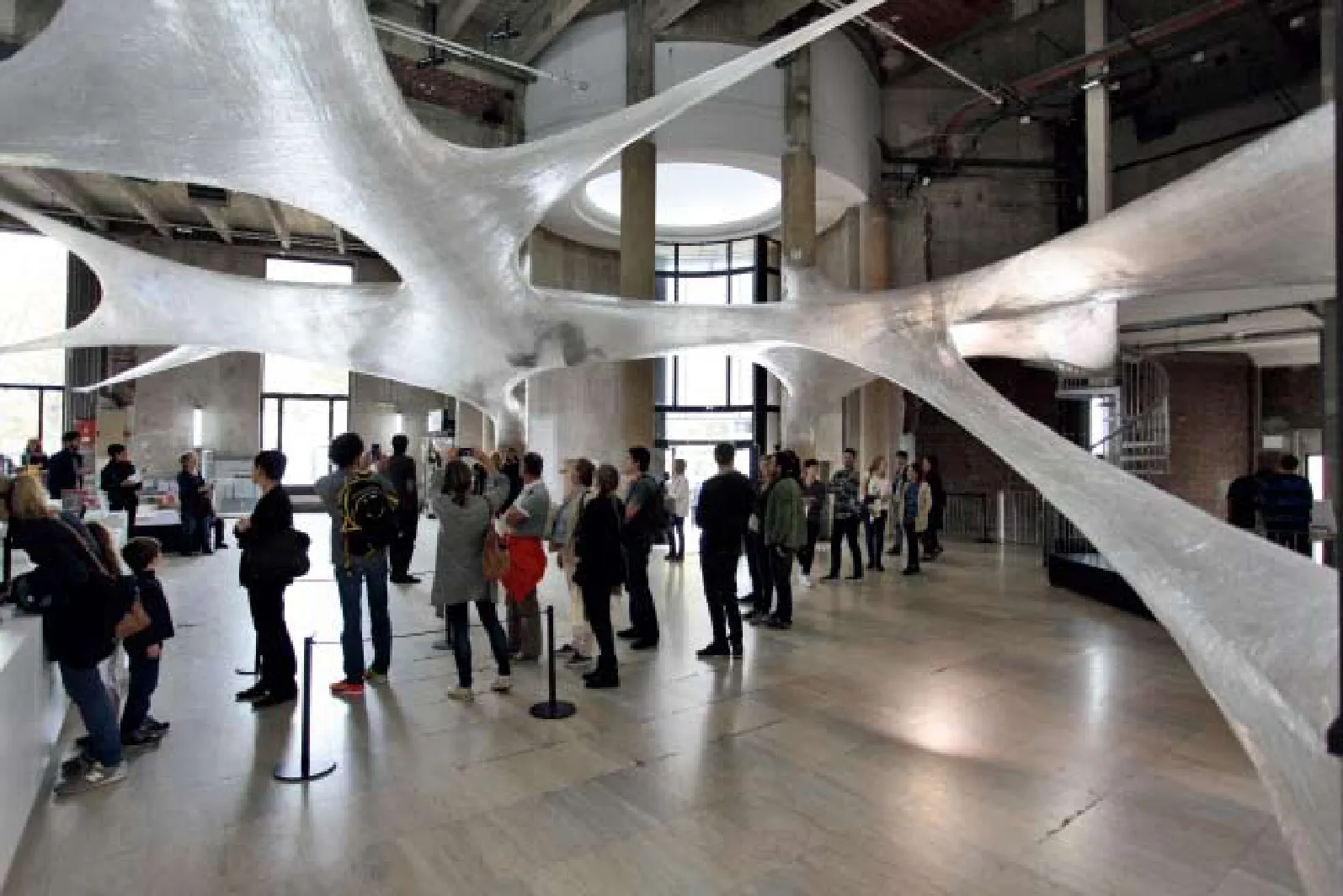
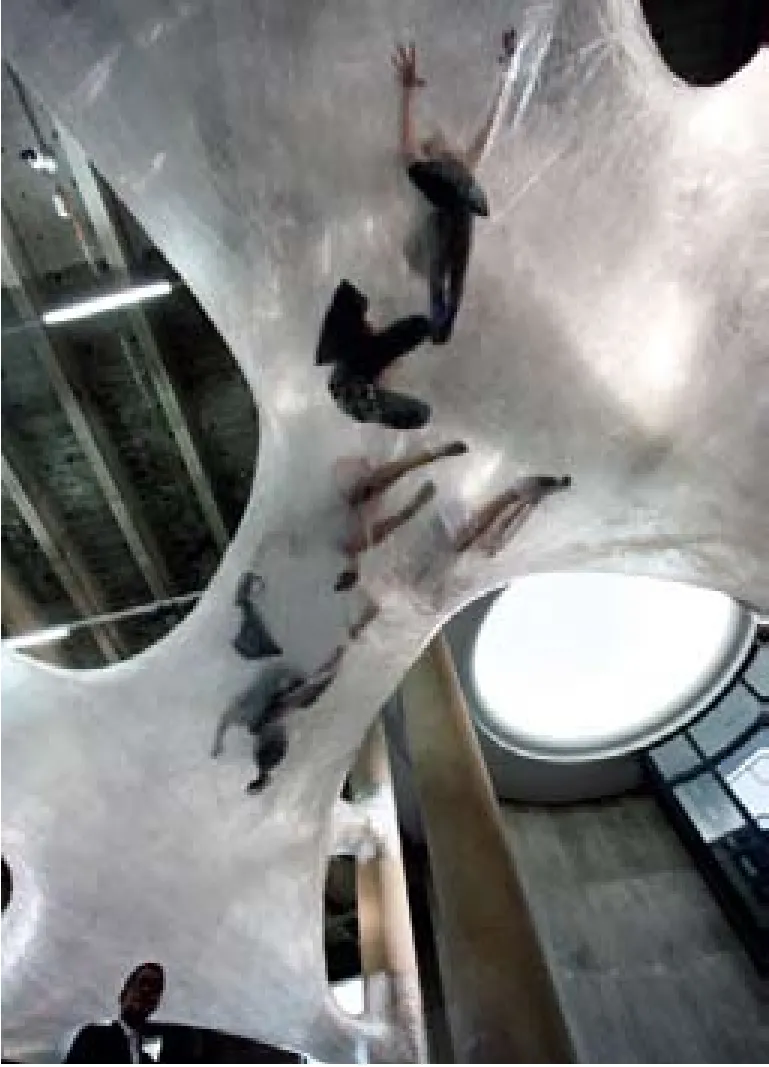
9.10 巴黎,法国/Paris, France, 2014-2015
Constant wrapping of pillars of a conventional historic roof construction with a transparent adhesive tape results in a complex, amorphous surface through the process reminiscent of growing of organic forms. The idea originates in a set design concept for a dance performance in which the form evolves from the movement of the dancers between the pillars.The dancers are stretching the tape while they move so the resulting shape is a (tape) recording of the choreography. One dimensional line evolves into surface that forms organic shape of extraordinary strength. The entrance of the audience inside the volume transforms the sculpture into architecture.
The tape concept developed further towards a more sculptural architectonic form. It was practically "found" through the act of chaotic wrapping, where a one-dimensional line ("tape"), slowly turned into two-dimensional plane, which then finally curved into volume.
The installation was envisaged as a site specific, parasitical structure invading an arbitrary location. The straight lines of main trajectories are stretched across a given area and these tendons are then wrapped diagonally with layers of elastic tape, giving shape to a complex organic form through a process similar to the emergence of such structures in nature.
With the further layering of the tape, the figure becomes more and more corporeal as it picks up on the slow increase of the curvature. The interior of the structure is supple, elastic, and pliable while the form itself is statically perfect, as it ideally follows the trajectories of forces, being literally defined by them. In the moment when the audience enters the installation, what started off as a sculpture seamlessly morphs into architecture.
Tape Paris
The curatorial concept delves into the murky territory of both physical and psychological interiority, thematising immersion, introspection and probing of the depths of self. The main idea was to transform the whole building into a convulsive mind/body organism whose slippery inner limits a motivated explorer has yet to trace and confront. The stretched biomorphic skin of Tape Paris is marking the entry point to the whole experience, being a literal incarnation of an inner-directed, regressive environment - the sense of descent into the primordial always lingering around its openings.
Tape, 2009
Designers: Numen/For Use

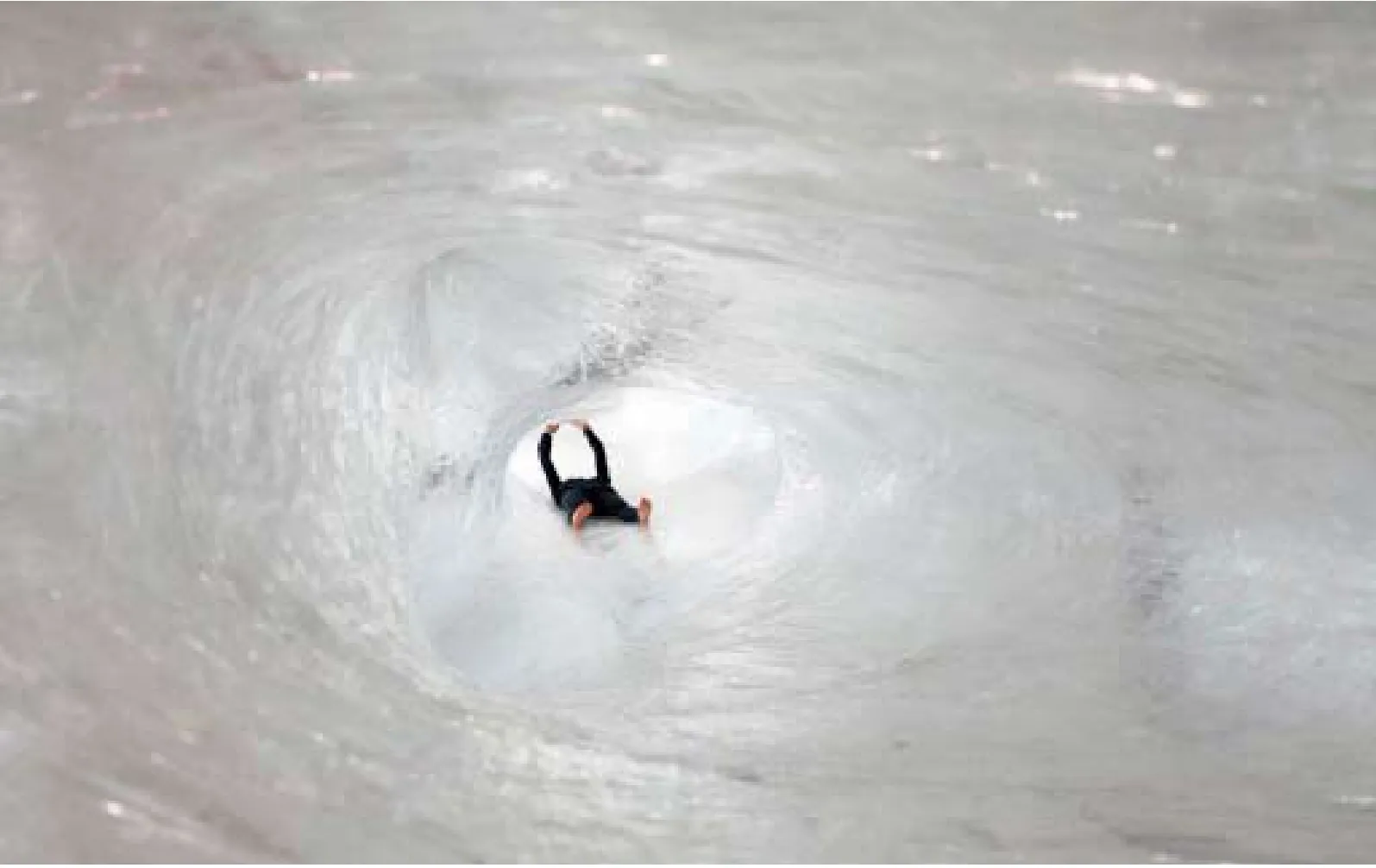
11.12 巴黎,法国/Paris, France, 2014-2015
